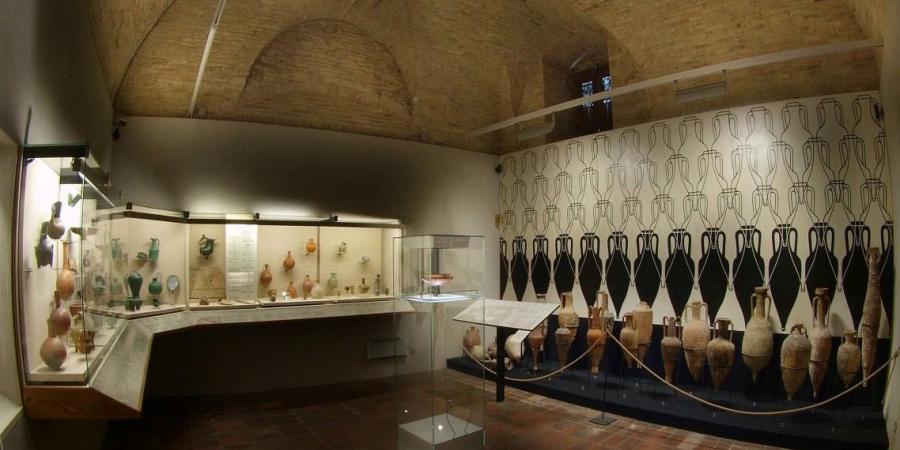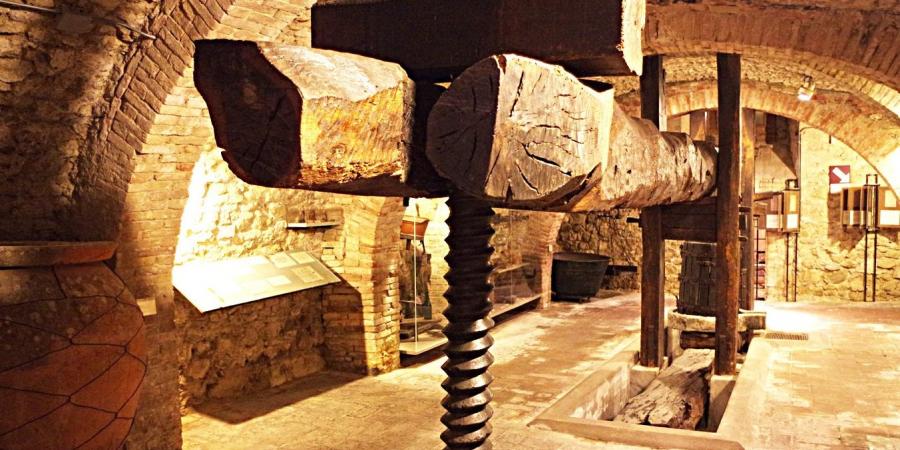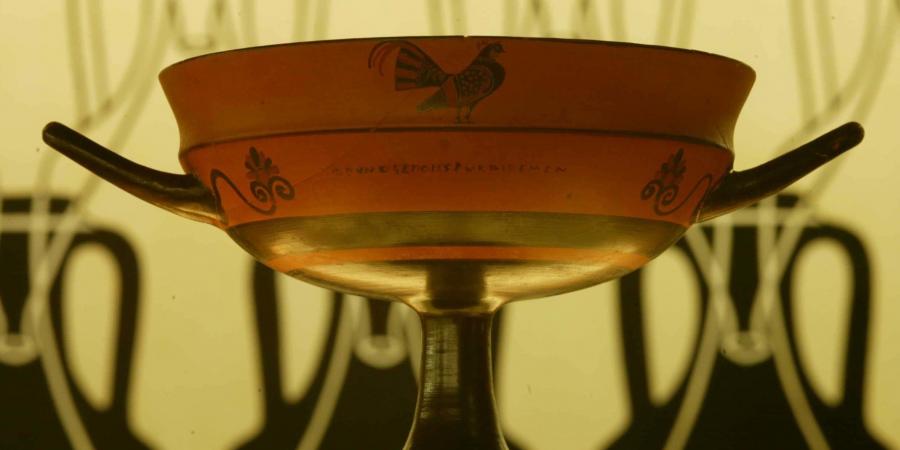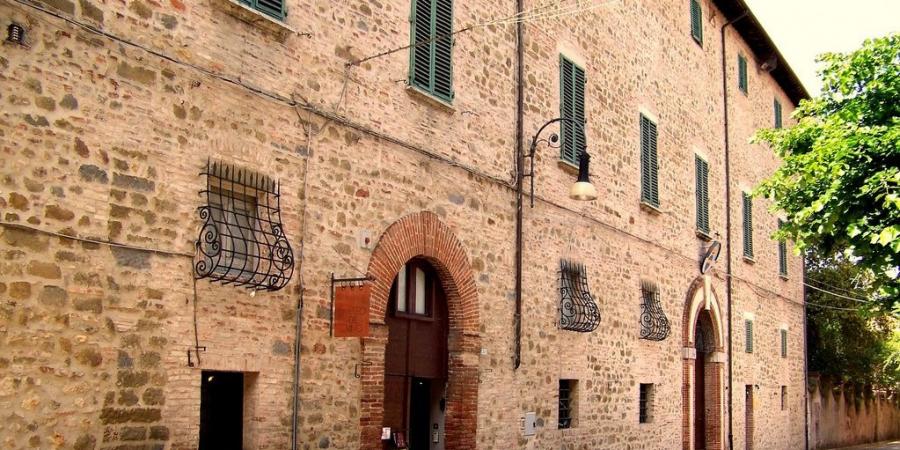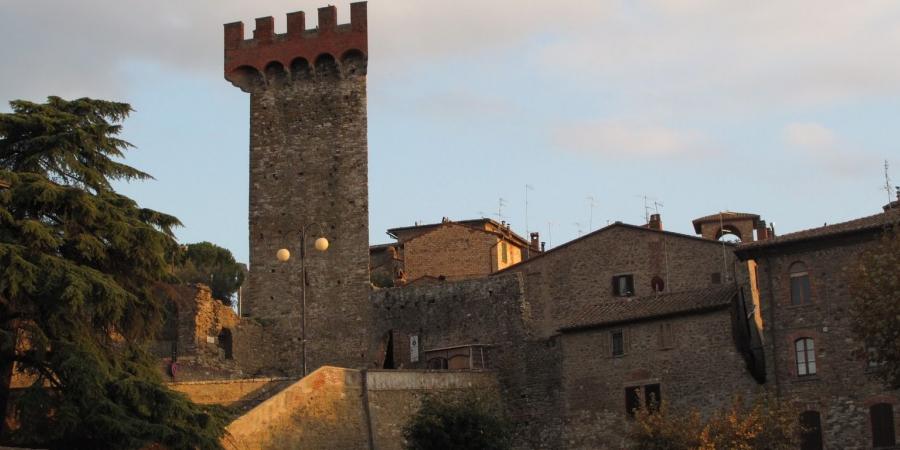Wine Museum of Torgiano (Umbria)
A veritable time machine that travels across 5000 years of history. Wine as you have never seen it before: not only fermented grape juice but a fascinating product that is also culture. Through archeological finds, ceramics collections, glassware, engravings and ethnographic collections, all the secrets of a fascinating product with an engrossing history.
Wine Museum: a venerable history
The mysterious fascination of the Dionysian myth with the articulated system of symbols and meanings that wine has had over the course of the centuries is the narrative thread guiding the visitor through the extraordinary collections of the MUVIT collections. By exhibiting archeological finds, artworks and ethnographic collections illustrating viticulture and vinification, the museum offers a veritable trip through time… and narrates a venerable story, full of magic spells and unexpected interpretations revealing the thousand facets of wine: an energetic food appreciated for its taste and stimulating properties, a precious product for barter, irreplaceable protagonist of the symposium, an element characterizing religious rituals and a recurring ingredient in pharmaceutical preparations...Created in 1974 from an idea of Giorgio Lungarotti and curated by his wife Maria Grazia Marchetti, it is housed in the 17th century Palazzo Graziani-Baglioni in the town centre of Torgiano. MUVIT is a must-see for lovers of art, culture and fine living who wish to know about or discover more deeply the history and civilization of wine. With its important collections, rigourous scientific research and museographic structure, MUVIT contributes to divulging the culture of informed wine consumption.
The Museum Itinerary
The Vine and Wine in the Ancient World
The term symposium - the ritual of conviviality developed by the ancient Greek culture – illustrates the idea of sociality that accompanies the culture of wine since time immemorial. Jugs and pouring vessels from the 3rd millennium B.C. up to the Roman period illustrate the myriad repre
The Viticultural Cycle
The operations that precede vineyard planting and the complex practices for cultivating and caring for vineyards. In this section, the agricultural instruments on display and a richly illustrated series of images depicting the central Italian countryside at the time when share-cropping was being phased out illustrate work in the fields and the vine’s life cycle. sentations of wine in ancient Mediterranean civilization.
The Mystery of Vinification
A fascinating step back in time into an antique wine cellar….in this room everything talks about wine: from the large vats for grape pressing to the monumental grape press described by Caton, still used until just a few decades ago when it was substituted by the new technologies for vinification.
Occasions for Sipping
So many moments of daily life are accompanied by wine, enhancing life’s pleasure and providing festive moments. It is permeated with symbolic meanings, used to seal agreements and celebrate special occasions. When offered to a loved one in “lover’s jugs” or “lover’s cups”, it is a precious “love potion”. A varied and amusing collection of serving vessels - from farmer’s flasks to the “drink if you can” vessels – tells of the infinite ways to enjoy wine
Wine and games: popular ceramics
The leit motif throughout the entire collection of wine vessels for everyday use is playfulness. The creativity and inspiration of the ceramic artist constantly finds inspiration from the themes related to wine. Animal-shaped flasks, jugs inspired by caricatures of humans, and “drink-if-you-can” vessels with complex mechanisms for accessing the wine contained in them…
Wine as Food
From the Middle Ages to the Renaissance up to the mid-18th century: jugs, cups and pouring vessels produced in the major Italian ceramics centres illustrate the history of ceramics and celebrate wine as a food. Wine, present on the tables of princes as well as in farmer’s kitchens and dining-halls of convents, is the protagonist of an extraordinary collection of ceramics organized in a highly evocative exhibition.
Wine as Medicine
Used since ancient times as a stabilizer of the therapeutic properties of herbs and other medicinal substances, wine was widely used in the druggist’s workshop. Medical texts and antique pharmacopeia are displayed alongside pouring spouts, apothecary vases and ointment jars from the pharmacies of convents, noble homes and hospitals. The numerous recipes displayed attest to the use of wine in medicine.
The Dionysian Myth
Dionysus and the articulated pantheon that revolves around him is the protagonist of ceramics and engravings preserved and displayed at MUVIT. The Greek god of wine and of ecstasy, Dionysus represents the natural energy which made fruit ripen. He is easily recognizable by the thyrsus entwined in a grapevine and leopard-spotted skins, and his image is ubiquitous, from historiated Renaissance plates to the art collection of more than 600 engravings, from Mantegna to Picasso that depict Bacchanalian scenes and animated processions.
The Dionysian myth in contemporary ceramic sculpture
Free interpretations of the Dionysian myth in contemporary renditions: from Nino Caruso to Pompeo Pianezzola, from Gio Ponti to Piero Fornasetti, from Jean Cocteau to Joe Tilson. The only common denominator: ceramics as an expressive medium and the eternal fascination of the myth with the ecstaty of the Maenads, the ambivalent character of Dionysus and the immortal verses of Euripides.
